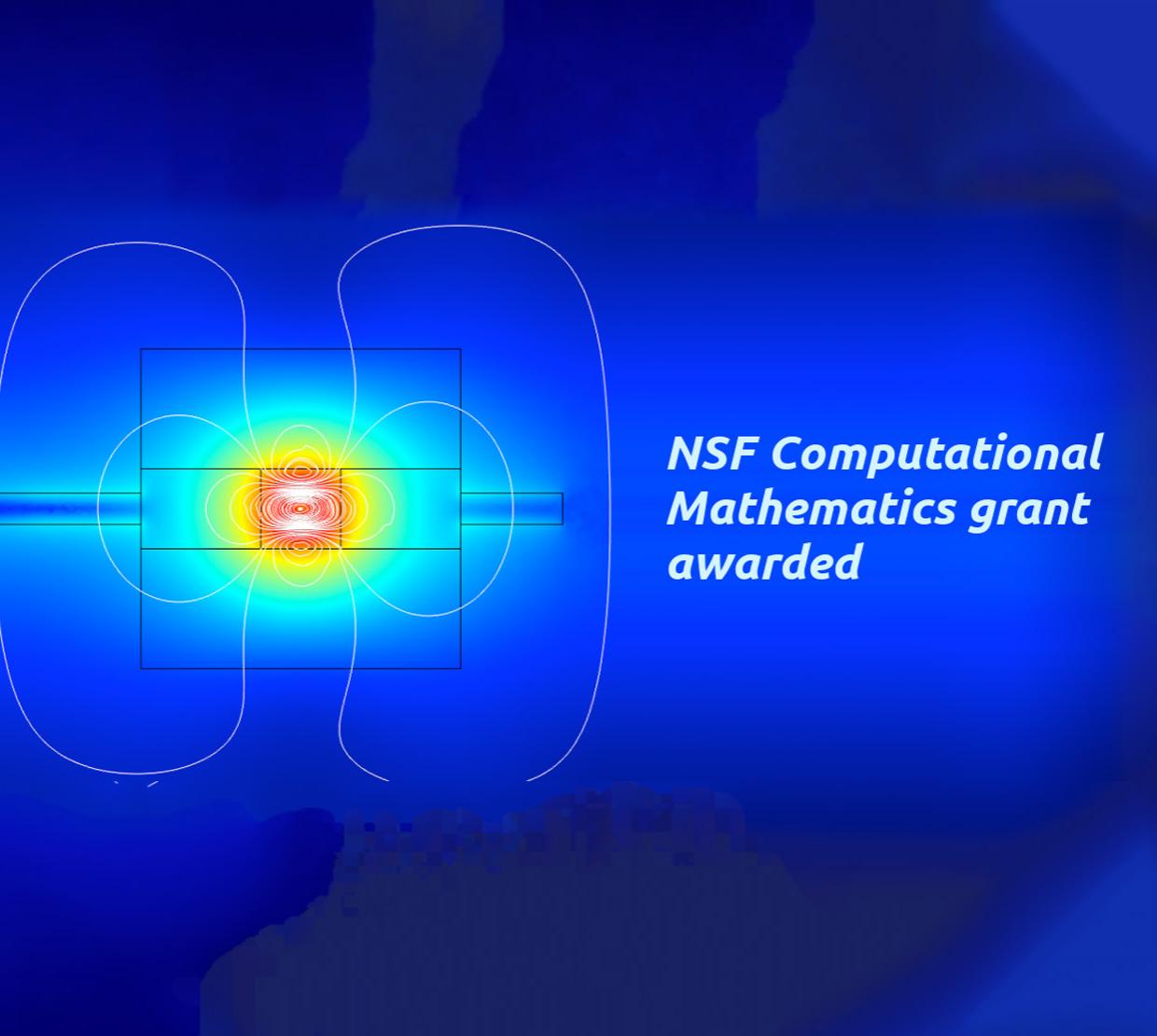Congratulations to Vrushali Bokil (principal investigator) and Nathan Gibson (co-principal investigator), who were awarded $225K funding from NSF’s Computational Mathematics program for their project "Computational and Multi-Scale Methods for Nonlinear Electromagnetic Models in Plasmas and Nanocomposites". The project is funded for the period August 1, 2020 - July 31, 2023 and includes co-principal investigator Pallavi Dhagat, Professor of Electrical & Computer Engineering at Oregon State University.
This project is an interdisciplinary collaboration involving mathematical modeling, computational simulation and experimental data for accelerating the design of advanced electromagnetic nanocomposite materials as well as alternative power generators. Nanocomposites, made of ferromagnetic nanoparticles in a dielectric, non-magnetic matrix, offer unparalleled opportunities for innovation in electromagnetic materials. The ability to predict electromagnetic material properties as a function of size, shape and concentration of inclusions in the host matrix, from computational simulations of physics-based models, will crucially aid in the digital fabrication of nanocomposites. These advances in design will enable applications including microwave frequency antennas and gradient refractive index lenses, printed electronic circuits and systems, to name a few. This objective is related to the Materials Genome Initiative's mission to accelerate materials innovation via computation. Professor Dhagat has been collaborating with HP Labs in Corvallis, on the application of multi-jet fusion technology for digital fabrication of magnetic composites.
A second objective involves Magnetohydrodynamic (MHD) power generation, which is potentially a significant component of a secure U.S. energy portfolio. The lack of moving parts in an MHD power generator increases the overall efficiency of the power plant and potentially decreases carbon emissions significantly. Computational simulations of physics-based models will aid in the optimal design of these thermally efficient energy systems. The models we consider are also essential to correctly modeling solar flares which can trigger geomagnetic storms disrupting power and communications costing millions of dollars in losses. Thus our techniques will advance applications in astrophysics, space weather prediction and clean energy systems, among others. PhD student Sebastian Naranjo Alvarez (Advisor: Bokil) will be funded by this project to work on Mimetic Finite Difference (MFD) methods and Virtual Element Methods (VEM) for MHD models in collaboration with Vitaliy Gyrya and Gianmarco Manzini of the Applied Mathematics and Plasma Physics group in the Theoretical Division at Los Alamos National Laboratory. PhD student Evan Rajbhandari (Advisor: Gibson) is working on a closely related project involving MHD modeling and simulation, including inverse problems and uncertainty quantification. He is being funded directly by Bokil and Gibson's collaborator Rigel Woodside from the National Energy Technology Laboratory in Albany, OR.




